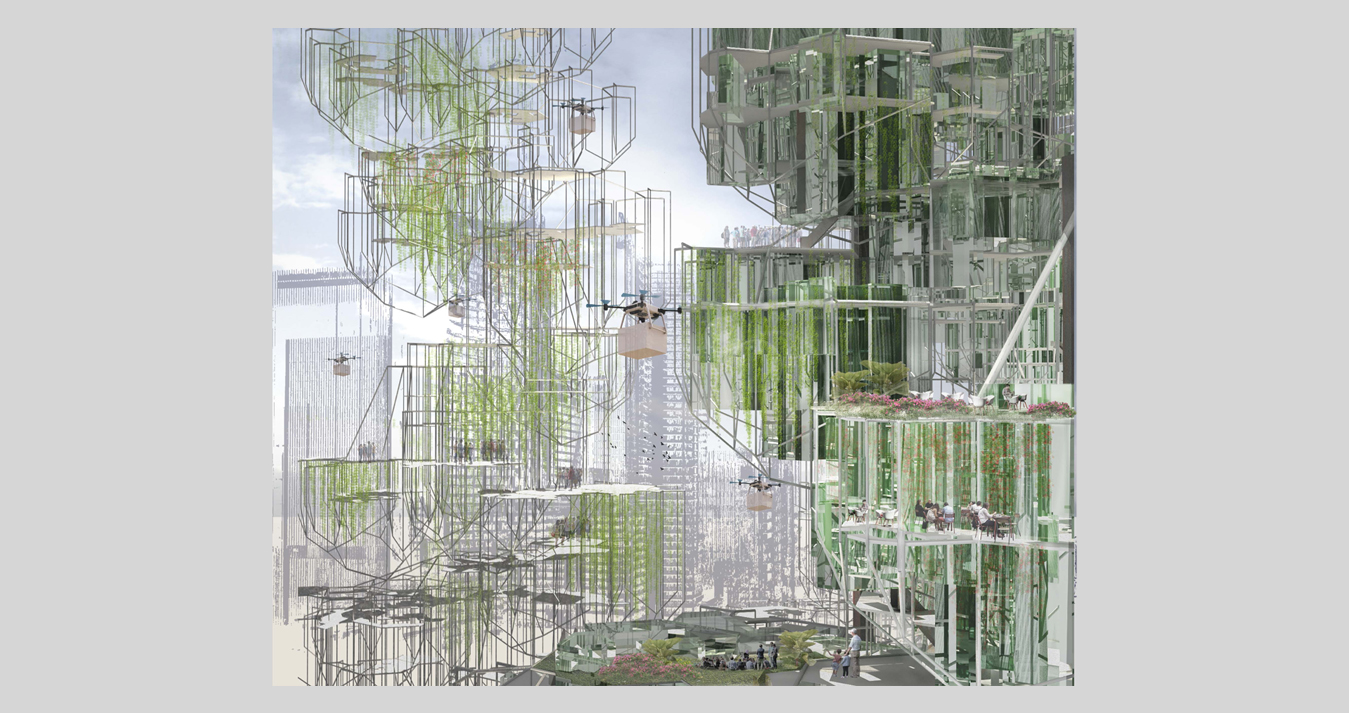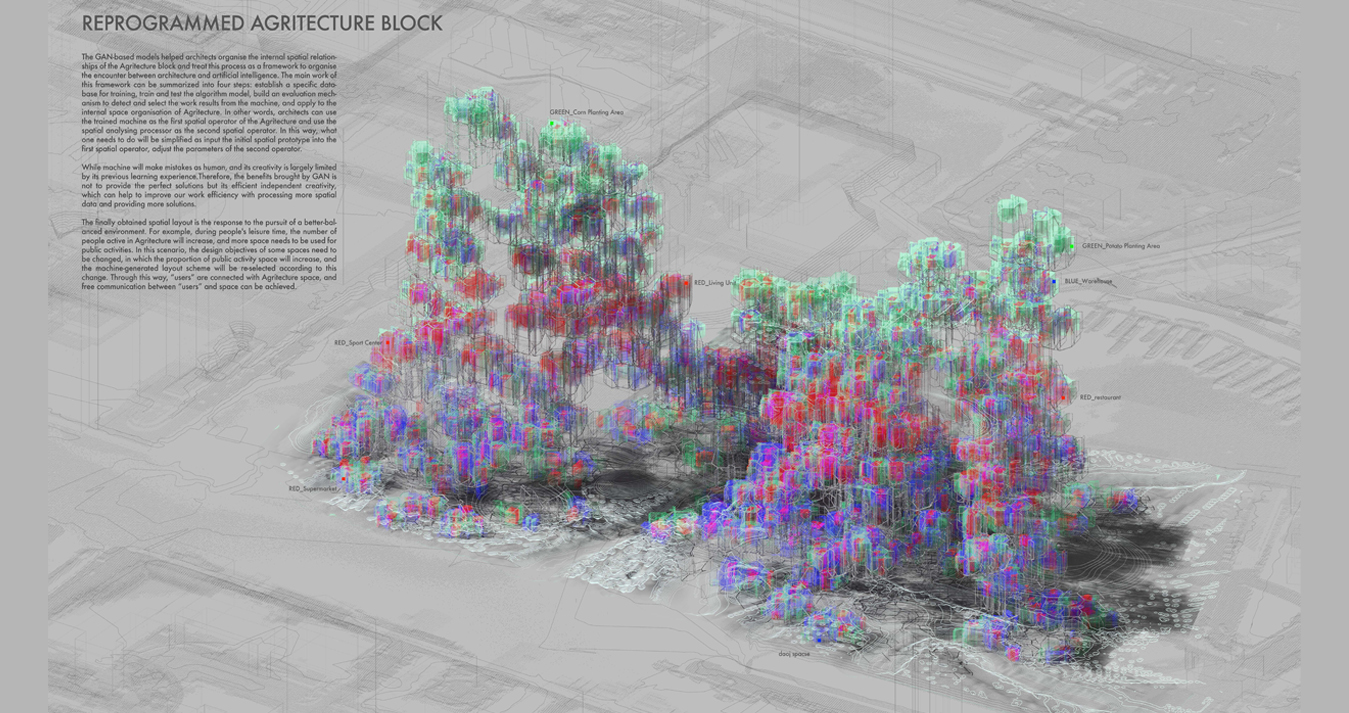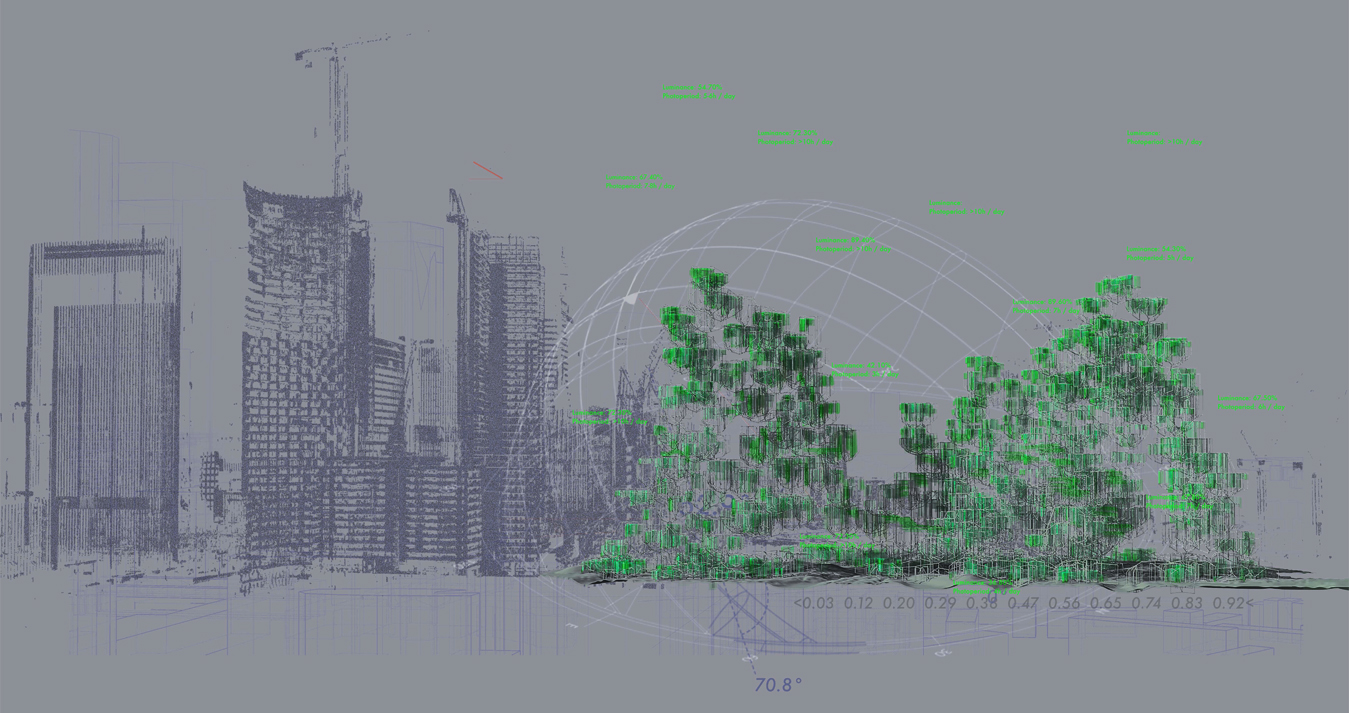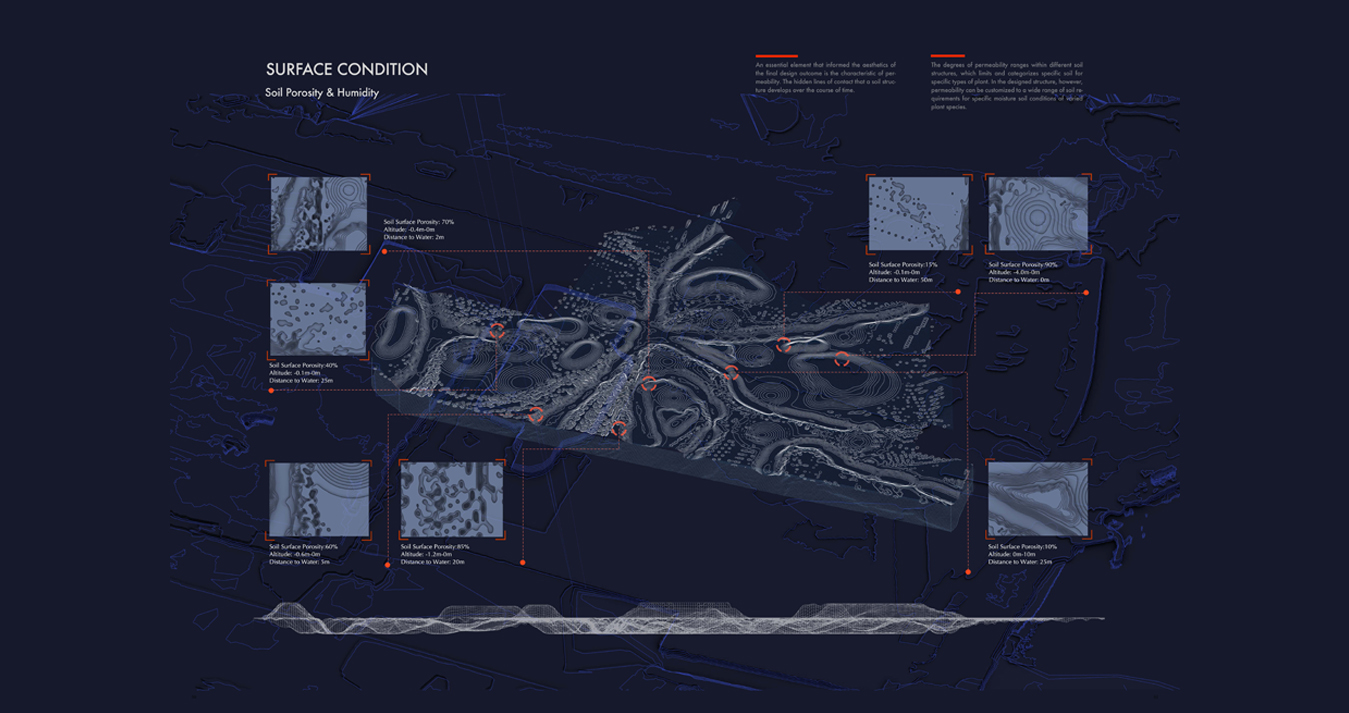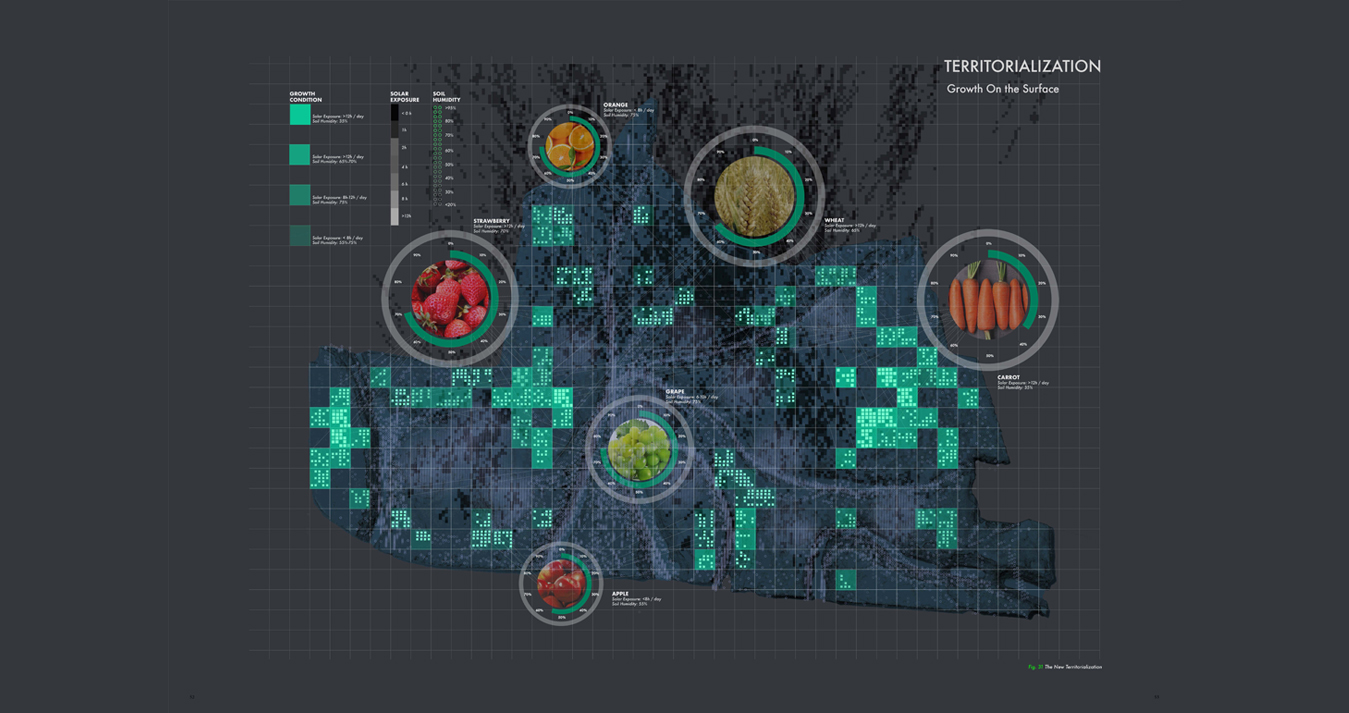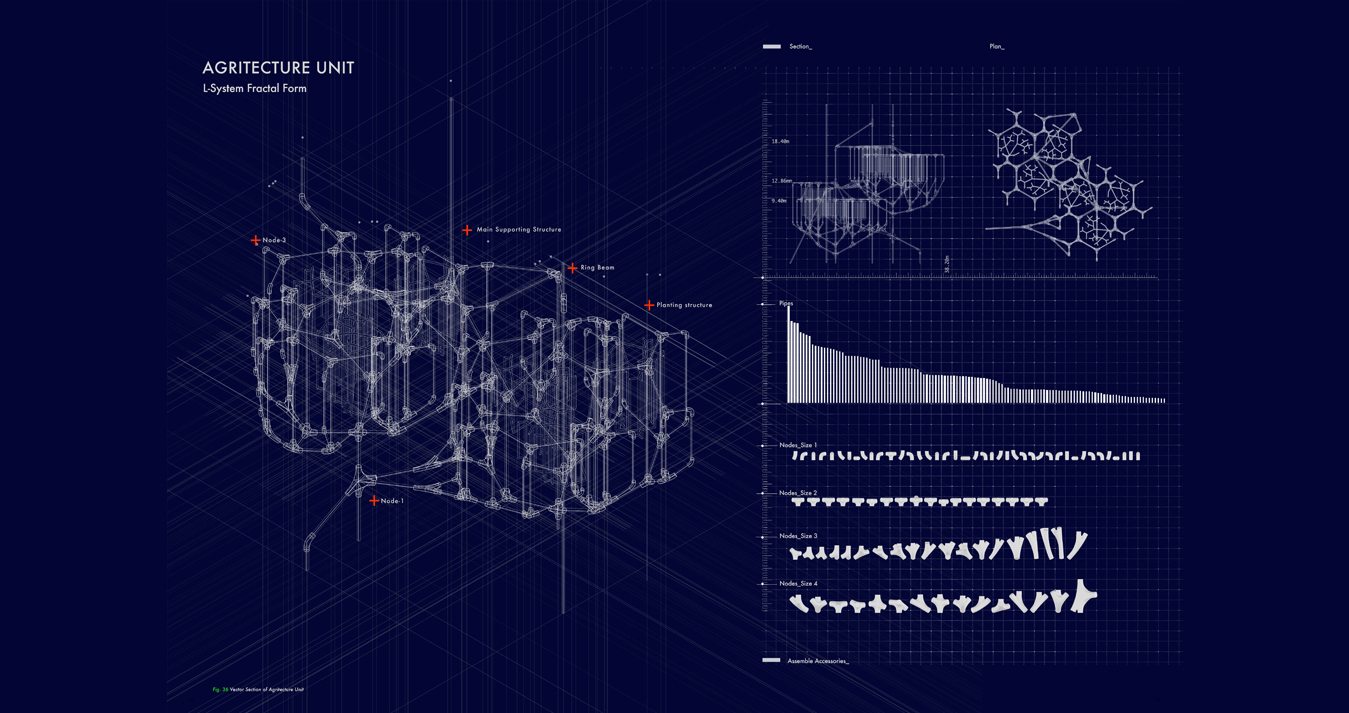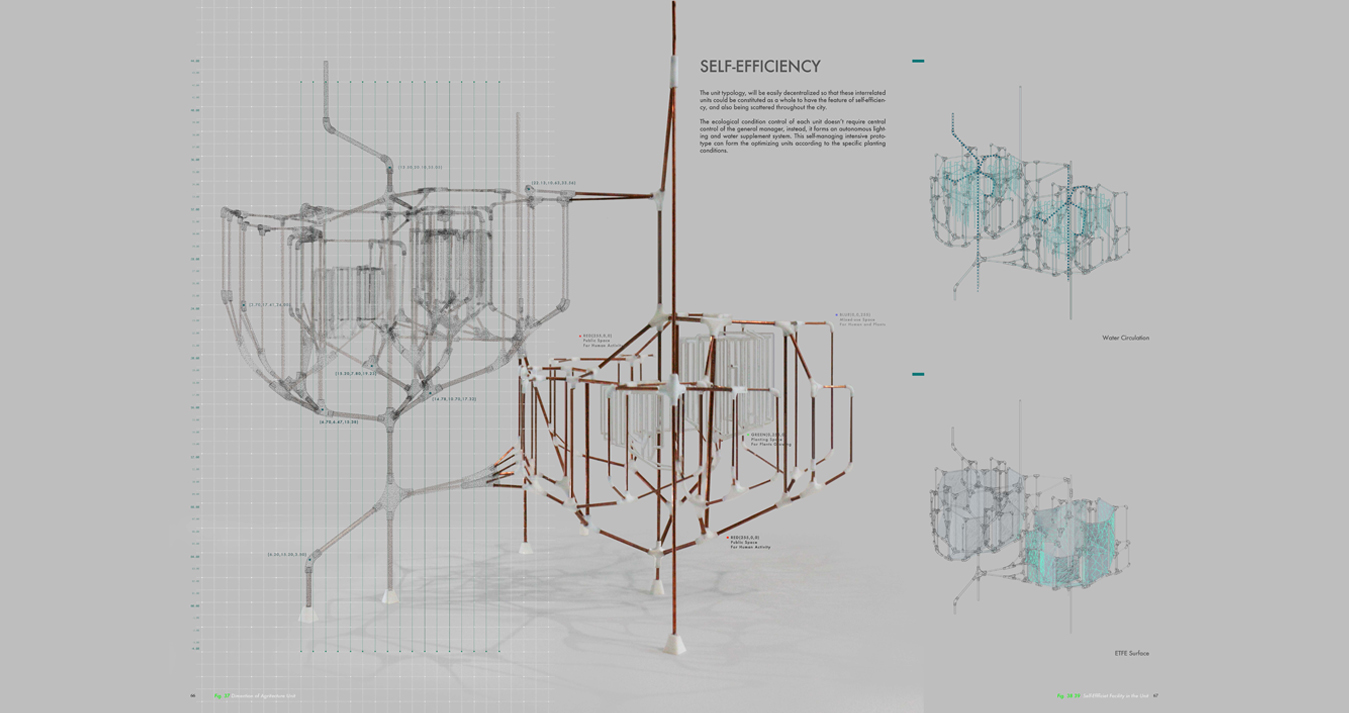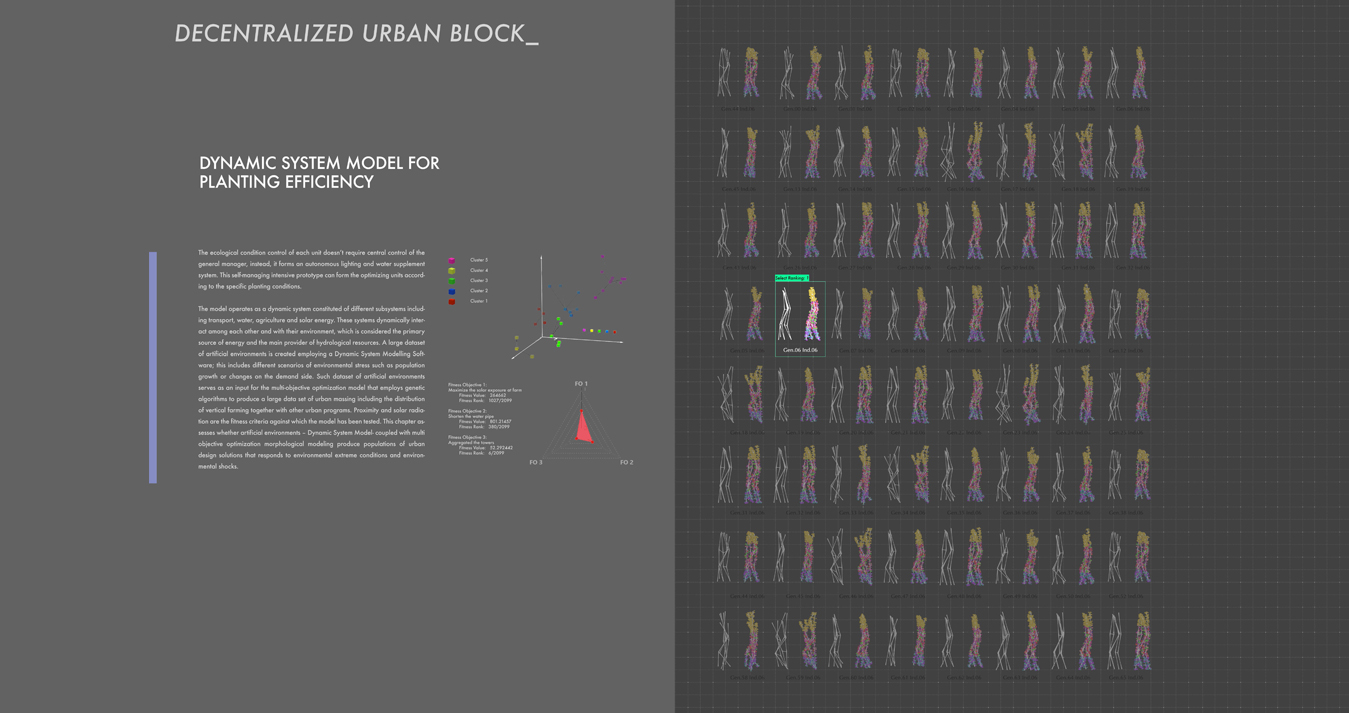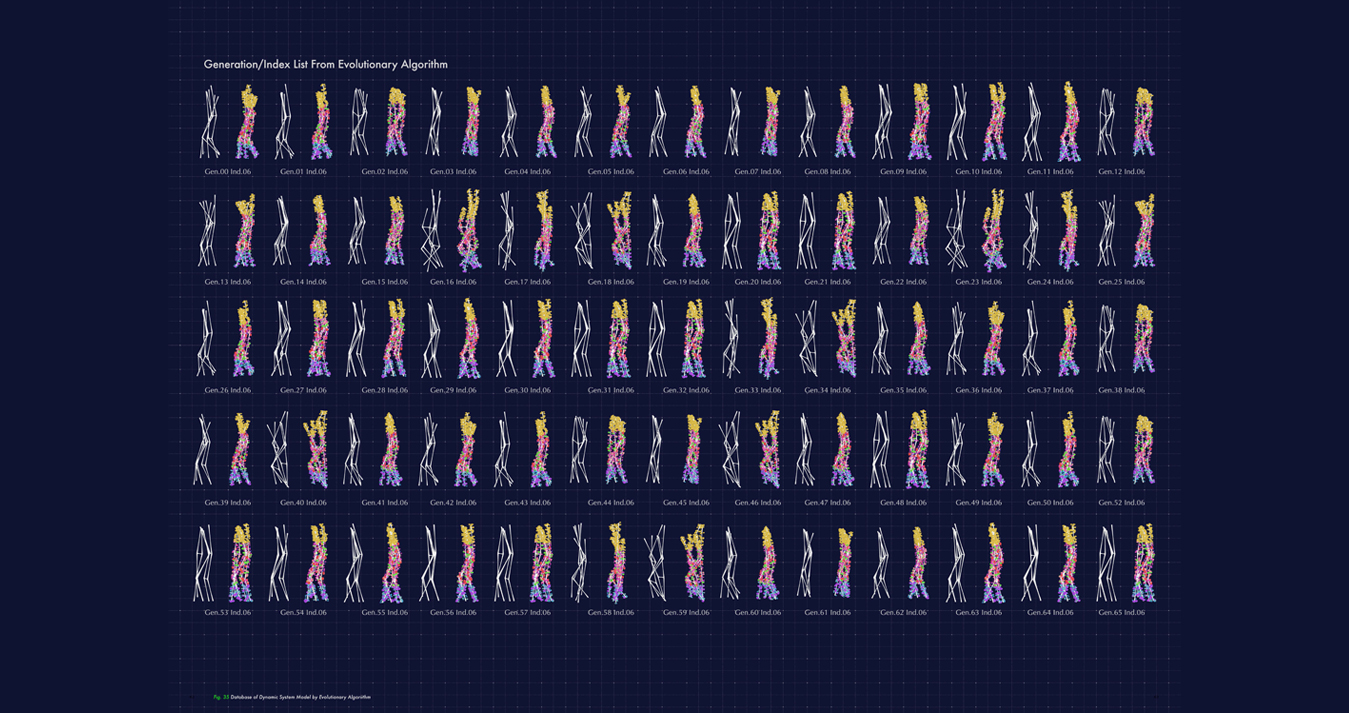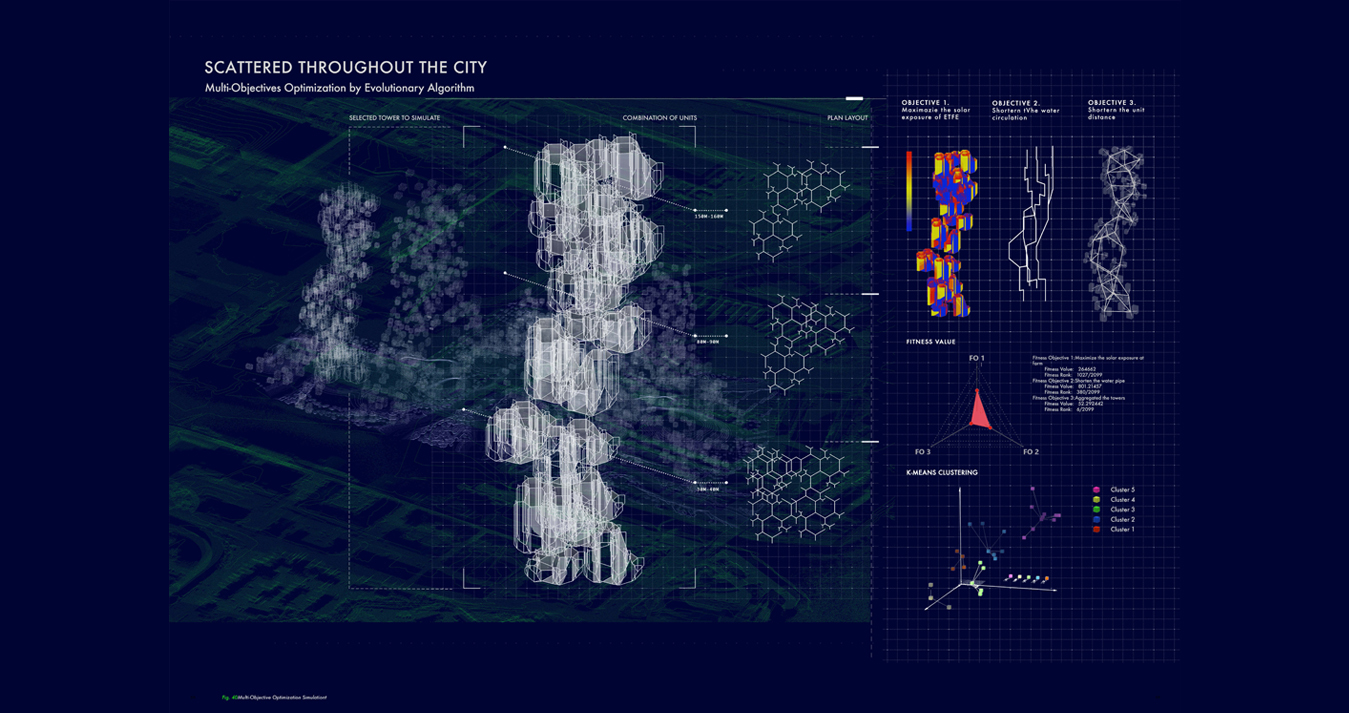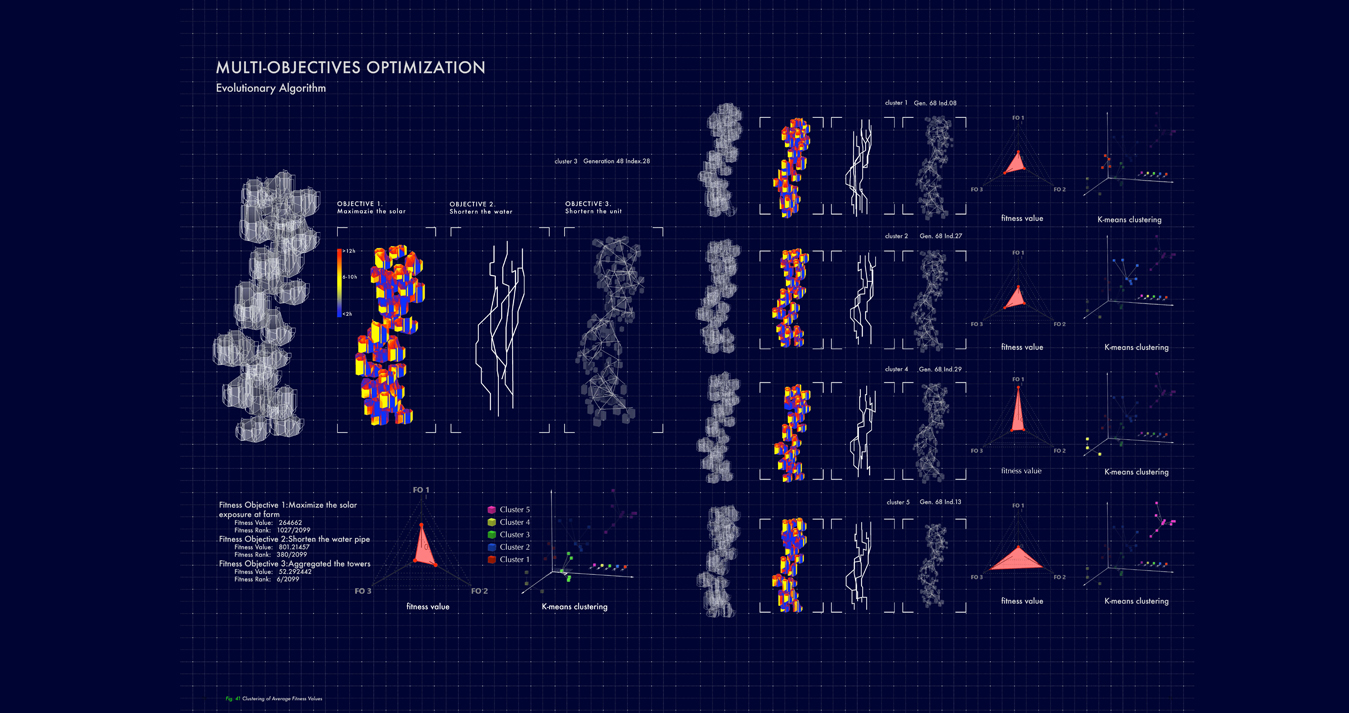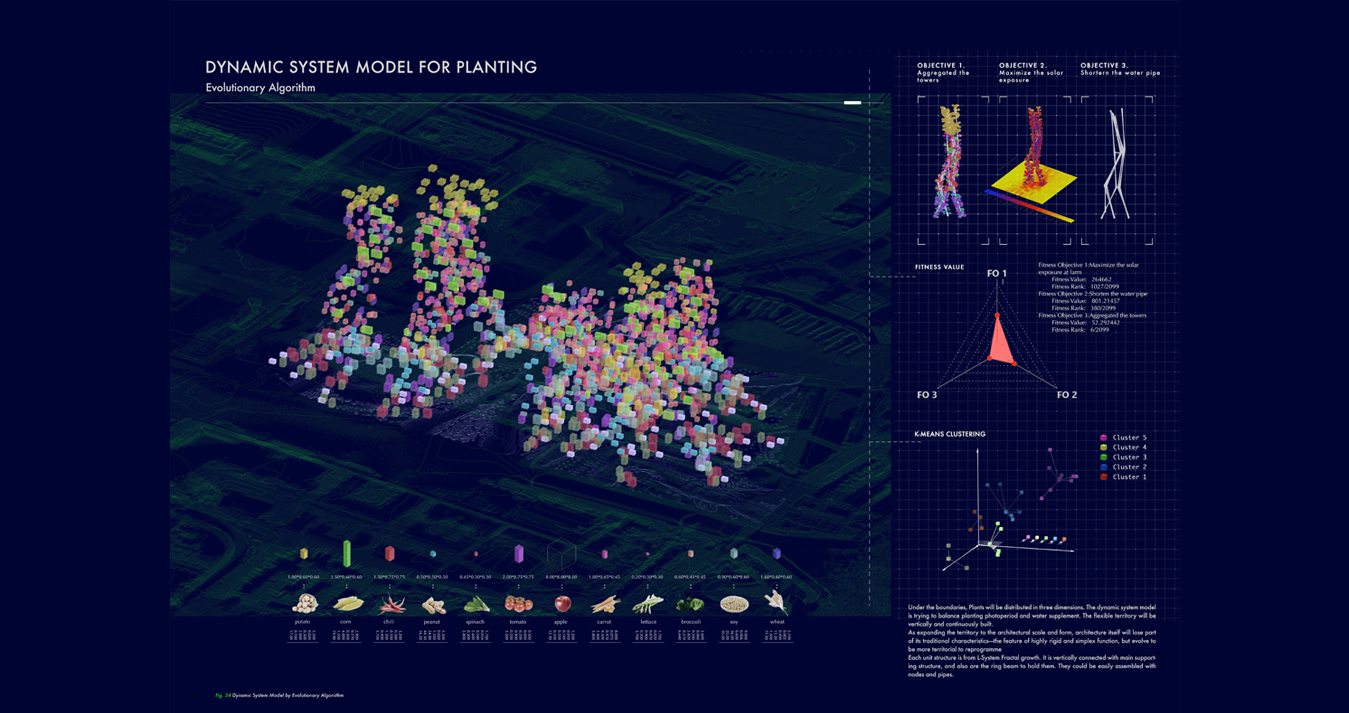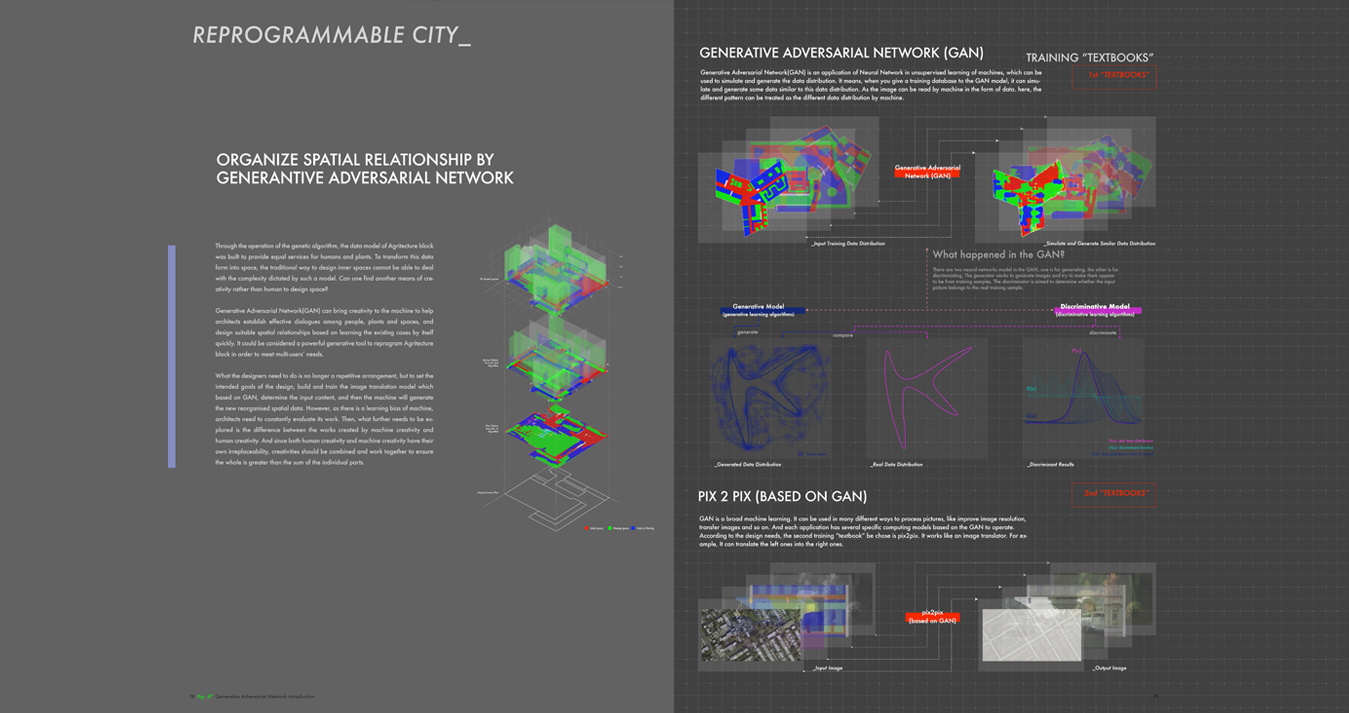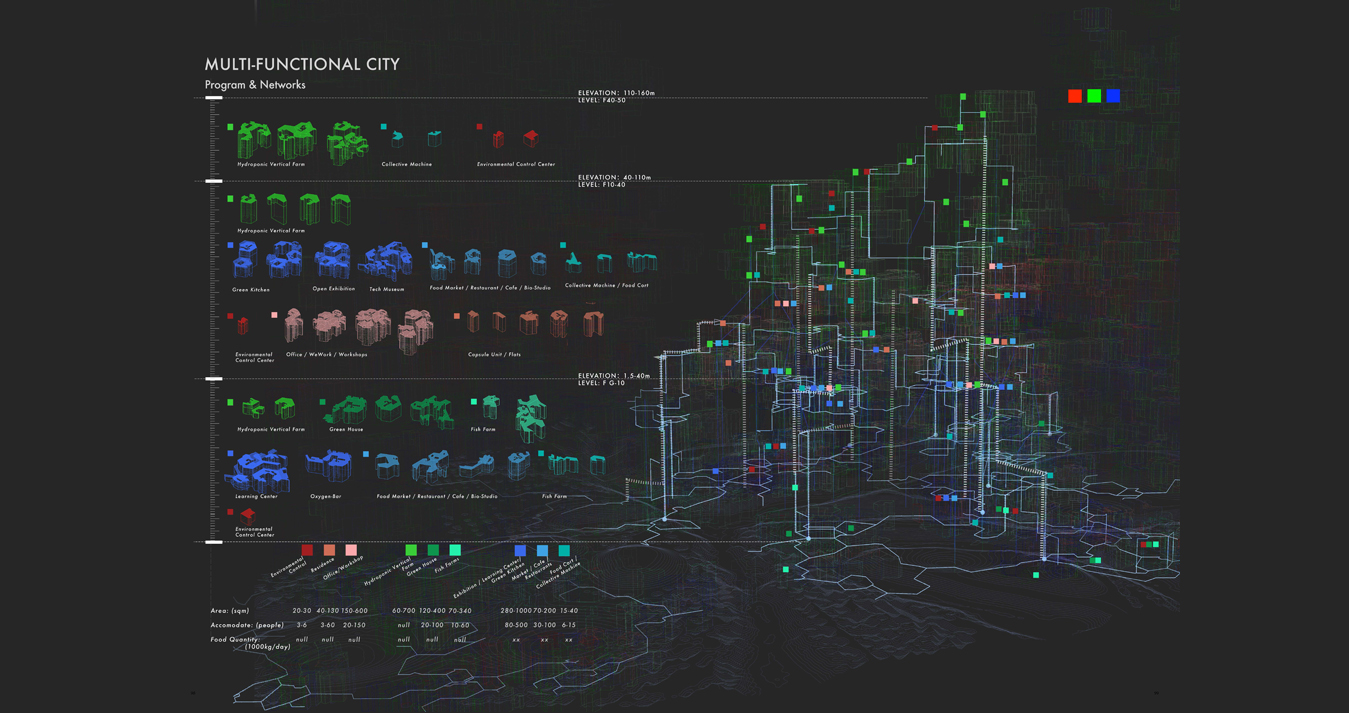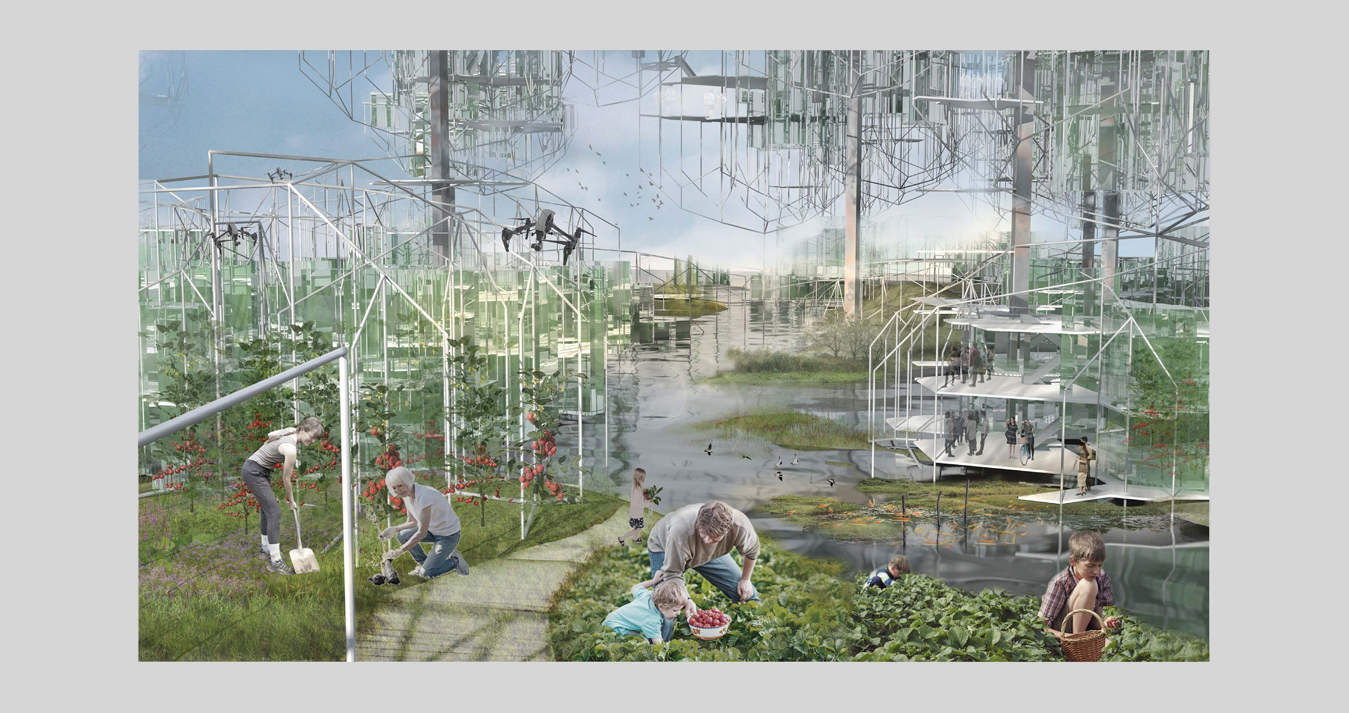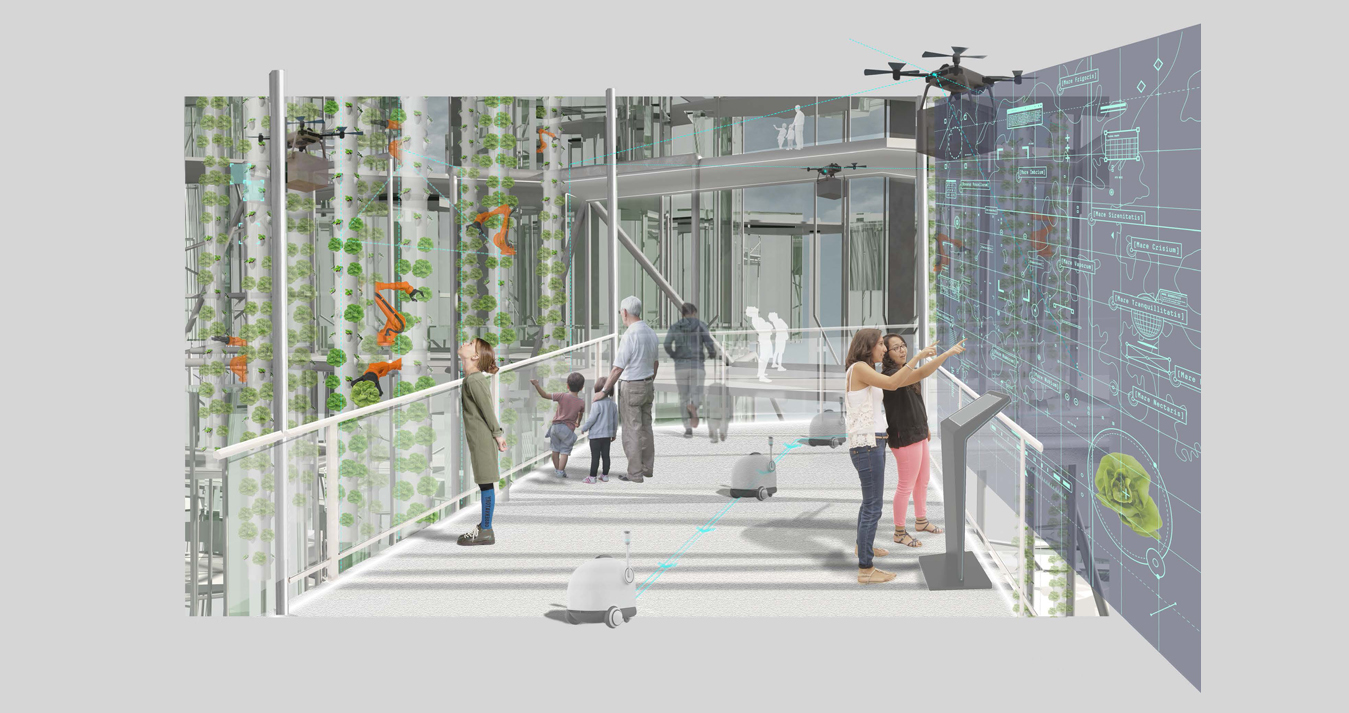
Agritecture: A new pattern for agrarian urbanism.
By 2050 the world population will reach 9.5 billion people; if the Agriculture production continues using the current agrarian models it will require an additional arable land of 850 million hectares. For the introduction of vertical farming as a new pattern of agrarian urbanism we need to consider that City is an evolutionary complex system, a system of systems where land is the key catalyst of its own flexibility. So, how can we create new catalysts in the urban block that provide the flexibility to perform as an evolutionary complex system?
Agritecture proposes a layered exo-skeleton that constitutes an interdependent unit of production. This is allocated according to the biochemical processes required for the performance of vertical farms. However we cannot ignore the cultural implications of agriculture production as a landscape and the value of greenhouses in the history of architecture. How can an algorithm help the designer to introduce these values in a systematic way?
The interdependent unit of production is reprogrammed using a generative adversial network (GAN), two neural networks, the generator and the discriminator enter in a continuous dialogue with the designer in order to reprogram an evolutionary system.The project raises questions about future symbiosis between man and machine and what will be the role of the designer when using machine learning algorithms. Research Cluster 18: Fab&Media Urbanism. Bridging across mass customization.
- [Category] MArch Design Thesis
- [Institution] BPro RC18. Bartlett School of Architecture
- [year] 2019-2020
- [Leaders] Enriqueta Llabres and Zach Fluker
- [Students] Jingyun Zhao, De Yu and Zheyu Sun
- [Tutors] Dimitra Bra, Maria Paneta, Martyn Carter, Sheng-Yang Huang, Mohammed Makki, Milad Showkatbakhsh and Ilaria Di Carlo
- [Partners] RhinoCFD, Wallace
Agritecture: A new pattern for agrarian urbanism.
By 2050 the world population will reach 9.5 billion people; if the Agriculture production continues using the current agrarian models it will require an additional arable land of 850 million hectares. For the introduction of vertical farming as a new pattern of agrarian urbanism we need to consider that City is an evolutionary complex system, a system of systems where land is the key catalyst of its own flexibility. So, how can we create new catalysts in the urban block that provide the flexibility to perform as an evolutionary complex system?
Agritecture proposes a layered exo-skeleton that constitutes an interdependent unit of production. This is allocated according to the biochemical processes required for the performance of vertical farms. However we cannot ignore the cultural implications of agriculture production as a landscape and the value of greenhouses in the history of architecture. How can an algorithm help the designer to introduce these values in a systematic way?
The interdependent unit of production is reprogrammed using a generative adversial network (GAN), two neural networks, the generator and the discriminator enter in a continuous dialogue with the designer in order to reprogram an evolutionary system.The project raises questions about future symbiosis between man and machine and what will be the role of the designer when using machine learning algorithms. Research Cluster 18: Fab&Media Urbanism. Bridging across mass customization.


